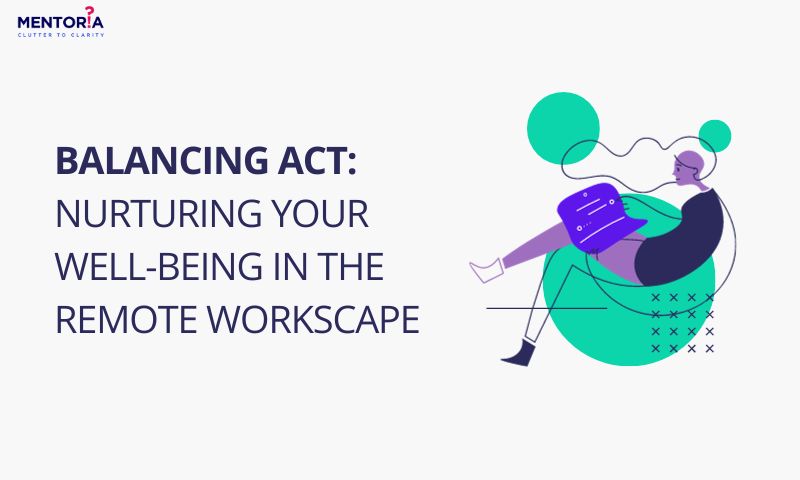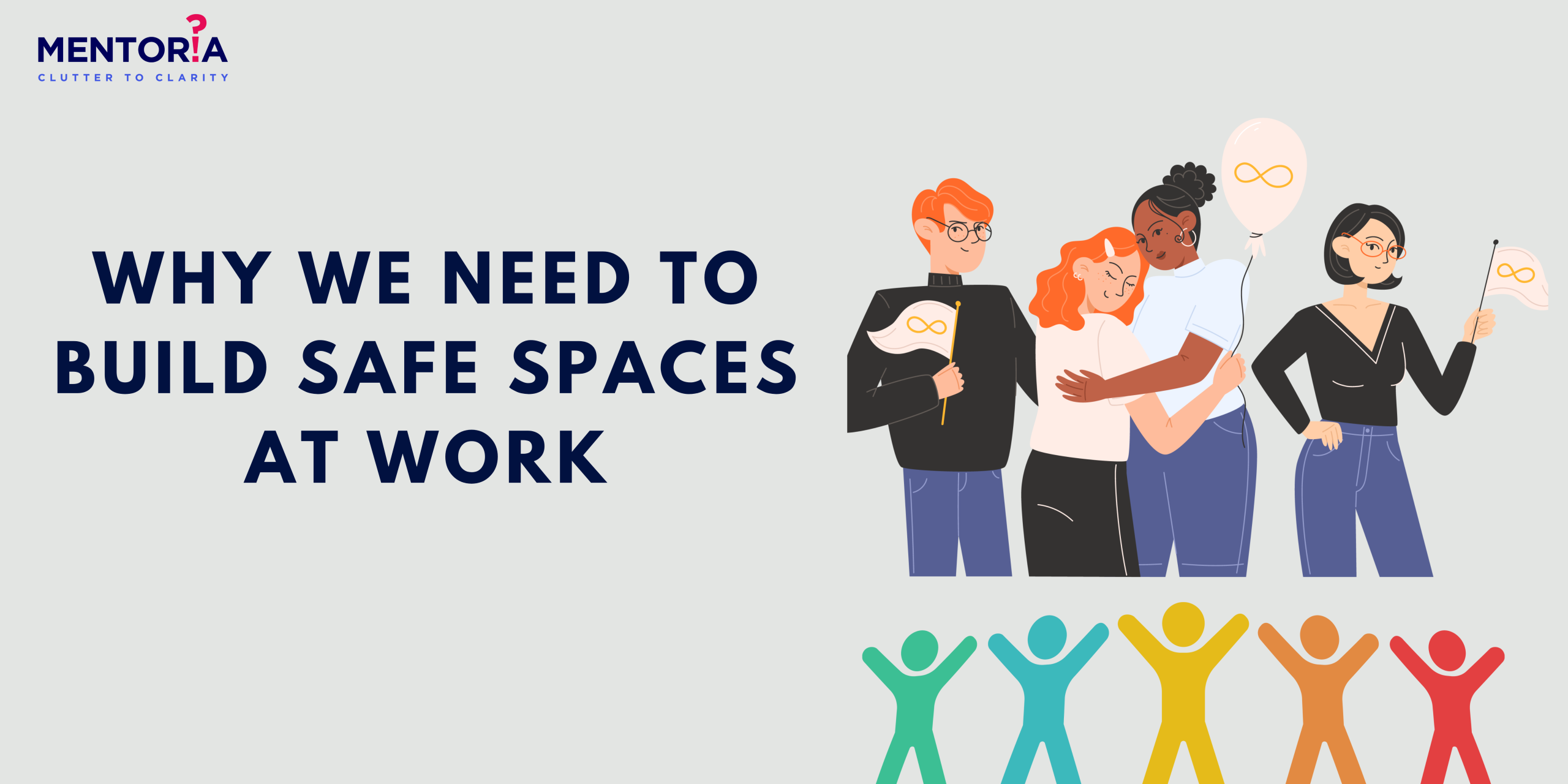Balancing Act: Nurturing Your Well-Being In The Remote Workscape

In recent years, remote work has become increasingly popular, with many companies embracing the flexibility it offers. While working from home has its advantages, it also presents unique challenges when it comes to maintaining a healthy work-life balance. In this article, we will explore the importance of setting boundaries and share some practical tips on how to navigate the fine line between work and personal life in a remote work setup. Remote work has blurred the traditional boundaries that separate our professional and personal lives. The absence of a physical workspace shift and the constant access to digital communication tools can make it challenging to switch off from work. This blurring of lines can lead to burnout, decreased productivity, and a negative impact on one’s overall well-being.
Establish a Dedicated Workspace
One of the first and most critical steps to maintaining your well-being while working remotely is to create a dedicated workspace. This space serves as the foundation for your productivity and work-life balance. A recent study from Stanford University, for example, showed that only 49% of American workers log-in remotely from a dedicated room, while the remaining 51% are working either from their bedroom or a communal area.
Choose a Quiet and Comfortable Location: Select a part of your home that is free from distractions and noise. It could be a spare room, a corner in your living room, or even a well-organised closet if space is limited.
Efficient Setup: Invest in a comfortable chair and a desk that suits your needs. Your computer monitor should be at eye level, and your keyboard and mouse should be within easy reach to minimise strain.
Tidy and Organised Setup: Keep your workspace neat and well-organised by using shelves, drawers, and storage solutions. A clutter-free area promotes a clear and focused mindset, making tasks easier to tackle.
Optimal Lighting: Ensure your workspace is well-lit. If you can, let in natural light. If not, invest in quality artificial lighting to reduce eye strain and enhance concentration while working.
Add a Personal Flair: Infuse your workspace with personal touches like family photos, artwork, or motivational quotes. These items can uplift your spirits and make your workspace feel more comfortable and inspiring.
Create a Routine
A structured daily routine is your guiding light when working remotely. It helps you stay on track, maintain a work-life balance, and ward off procrastination. In the Airtasker survey, 37% of the remote workers say taking regular breaks is the best way to stay productive. Use your break to get a snack, drink water, get fresh air, or check on your family. The average break time for a remote worker is 22 minutes spread out across the day. Schedule a virtual commute.
Set Regular Work Hours: Define specific working hours and stick to them. This helps create a clear boundary between your professional and personal life.
Consistent Morning Routine: Kickstart your day with a consistent morning ritual. Rise at the same time daily, indulge in a nutritious breakfast, and dress as if you’re heading to the office. This routine prepares your mind for a productive workday.
Organised Task Management: Create a to-do list or use time management tools to structure your day. Prioritise tasks, allotting time for important projects and smaller assignments. This method keeps you on track and focused.
Breaks and Nourishment: Plan regular breaks in your schedule. Use this time to stretch, take a stroll, and relish a satisfying lunch. These intervals offer a vital recharge for enhanced productivity.
End-of-Day Closure: As your workday wraps up, close your laptop, tidy up your workspace, and mentally transition into personal time. This ritual signifies the conclusion of work and assists in disconnecting from professional duties.
Dress for Success
While working from home offers the temptation to stay in your pyjamas all day, dressing for success can significantly impact your well-being and productivity. The concept of dressing for success exists for a reason. As highlighted by Scientific American, numerous studies have demonstrated the value of dressing more formally for work. For instance, researchers have found that formal clothing helps us to think more abstractly and negotiate more effectively.
Mental Shift: Putting on work-appropriate attire signals a mental shift, helping you transition from relaxation mode to work mode. It boosts your confidence and focus.
Professionalism: Dressing professionally, even when working remotely, is essential for video conferences and virtual meetings. A well-groomed appearance reflects your professionalism and respect for your colleagues.
Certainly, here’s a reimagined version:
Daily Ritual Maintenance: Incorporating your usual attire routine mirrors the pre-remote work days, fostering a sense of continuity. This practise aids in feeling connected to your professional self and maintains motivation.
Elevated Productivity: Dressing the part often correlates with a serious work mindset, potentially enhancing productivity and effectiveness in your tasks.
Readiness for the Unexpected: Being dressed professionally ensures preparedness for sudden video calls or unforeseen urgent tasks, offering a sense of confidence and readiness.
Stay Connected
Staying connected with colleagues and friends is crucial to maintaining your well-being while working remotely.
Virtual Meetings: Schedule regular virtual meetings with your team or colleagues. Video calls help recreate the social interaction you’d have in an office setting and foster a sense of togetherness.
Instant Messaging: Stay connected through instant messaging apps like Slack, Microsoft Teams, or even good old-fashioned text messaging. Quick messages can help maintain a sense of camaraderie.
Phone Calls: Don’t hesitate to pick up the phone and have a voice conversation. Hearing a colleague’s voice can be more personal and satisfying than written communication.
Virtual Water Cooler Chats: Initiate informal virtual gatherings, like virtual coffee breaks or happy hours. These informal chats can mimic the casual interactions you’d have in an office and help maintain relationships.
Ask About Others: Show genuine interest in your colleagues’ lives and well-being. Ask about their day, share personal updates, and offer support when needed.
Mentorship and Learning: Consider virtual mentorship or learning opportunities. It’s a great way to connect with others while also advancing your skills and knowledge.
Take Regular Breaks
In the hustle and bustle of remote work, it’s easy to forget the importance of taking regular breaks. 37 percent of remote employees prefer to take regular breaks so that they can stay productive and perform their best work, all throughout the day.
Avoid Burnout: Working non-stop can lead to burnout, which can be detrimental to your well-being. Regular breaks allow you to recharge, reducing stress and preventing burnout.
Productivity Booster: Curiously, taking breaks can actually heighten productivity. Short intervals sprinkled throughout your day refresh your mind, sparking creativity and enhancing concentration.
Physical Well-being: Long periods of sitting can cause physical discomfort. Breaks provide a chance to stretch, move, and ease tension in your body, promoting physical health.
Mental Wellness: Breaks serve as crucial moments of mental respite amidst a bustling day, offering relaxation and stress relief, thereby supporting mental health.
Try the Pomodoro Technique: Explore the Pomodoro Technique: work diligently for 25 minutes, then indulge in a 5-minute breather. After four cycles, reward yourself with a longer break. This methodical approach aids in maintaining focus and well-being.
Outdoor Intermissions: Whenever feasible, opt for outdoor breaks. A brief stroll amidst nature during breaks can profoundly impact your mental state, reducing stress and boosting happiness.
Practise Mindfulness
In the world of remote work, distractions are aplenty. Practising mindfulness can help you regain focus and enhance your well-being:
Be Present: Mindfulness is about being fully engaged in the present moment. When working, focus entirely on your tasks, avoiding multi-tasking or mind-wandering.
Meditation: Set aside a few minutes each day for meditation. Even brief sessions can help calm your mind and reduce stress. There are numerous apps and online resources to guide you.
Deep Breathing: Integrate short sessions of deep breathing exercises into your routine. A few moments of deliberate, slow breaths can work wonders in easing tension, reducing anxiety, and nurturing your mental health.
Mindful Eating: Embrace mindful eating during your meal breaks. Engage your senses by savouring the taste, texture, and aroma of your food. This practise not only enriches your dining experience but also aids in stress reduction and curbing overeating.
Minimise Distractions: Employ strategies to minimise distractions. Silence unnecessary notifications, organise your workspace for clarity, and designate specific times for checking emails and messages. This helps in maintaining focus and efficiency.
Gratitude practise: Keep a gratitude journal to acknowledge and appreciate the positive aspects of your work and life. Directing your attention to what you’re thankful for can significantly elevate your overall well-being.
In the realm of remote work, where the lines between professional obligations and personal life often blend, ensuring your well-being takes precedence. This guide has dived into several approaches to help you thrive in your remote work setting. Establishing a dedicated workspace lays the foundation for a productive and organised environment, while adopting a structured routine aids in balancing your professional and personal spheres. Maintaining a professional appearance and staying connected with colleagues fosters a sense of community and professionalism.
Regular breaks and mindfulness practises play pivotal roles in stress reduction, boosting productivity, and nurturing your mental and emotional welfare. These habits help sustain focus and maintain a healthy equilibrium between work and personal life—essential elements for your overall well-being. As the landscape of remote work continues to evolve, safeguarding your well-being remains paramount. By applying the strategies discussed in this guide, not only will you navigate telecommuting challenges, but you’ll also create a rewarding and sustainable work-from-home experience. Your well-being is invaluable, so cherish it, safeguard it, and allow it to thrive throughout your remote work journey.
Promoting Welfare With Mentoria
Remote work has become increasingly popular in recent years, and for good reason. It offers a number of benefits, including flexibility, autonomy, and reduced commuting time. However, it can also be challenging to maintain a healthy work-life balance and nurture your well-being when you’re working from home. Mentoria’s career counsellors can help you identify your interests, skills, and values, and develop a career plan that is right for you. We also matches you with a mentor who is an experienced professional in your field. Your mentor can provide you with guidance and support as you navigate your career.









